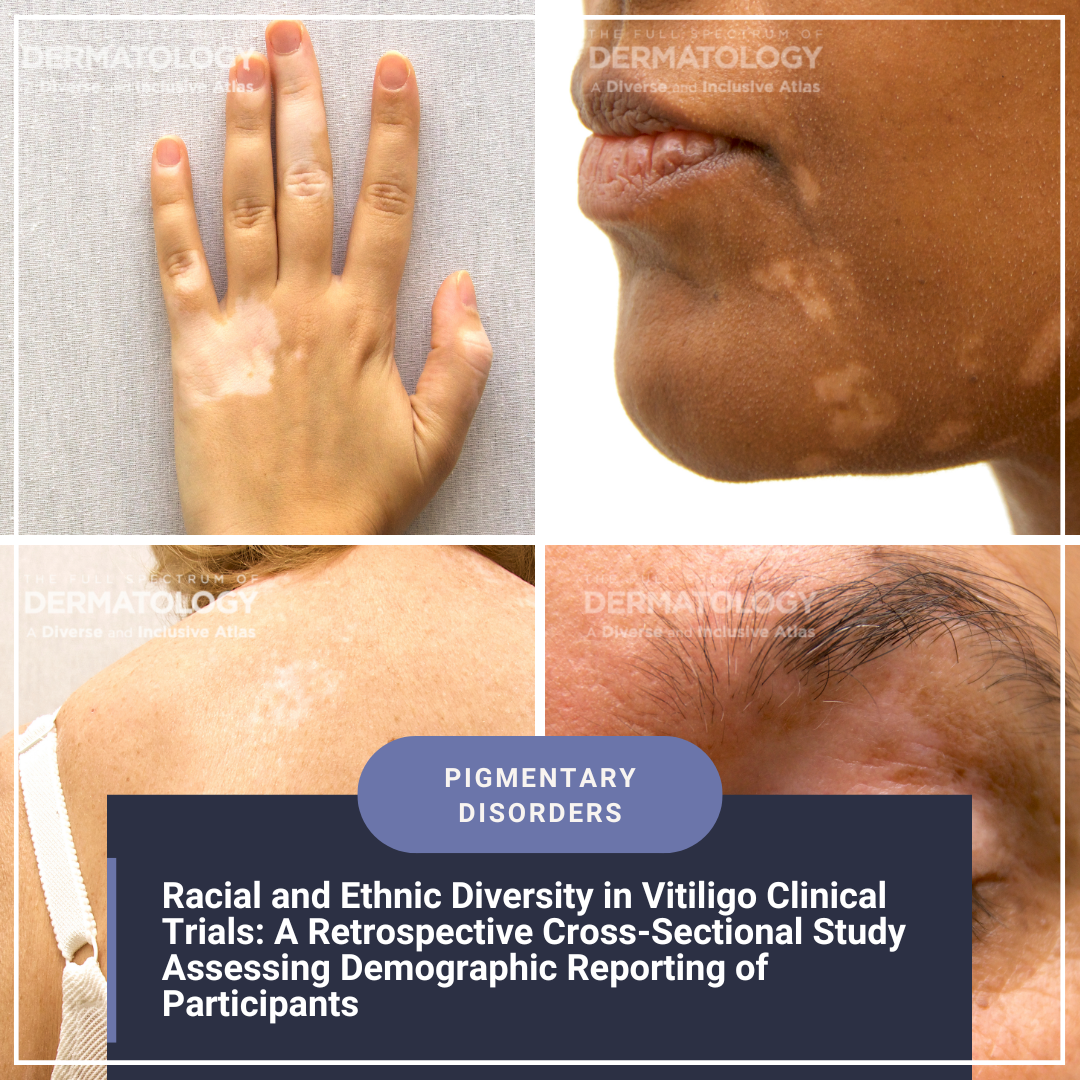Our latest blog post explores the study “Racial and Ethnic Diversity in Vitiligo Clinical Trials: A Retrospective Cross-Sectional Study Assessing Demographic Reporting of Participants” published in the Journal of Drugs in Dermatology by Holla et al.
Key Findings:
-
- Significant gaps in demographic reporting.
- Underrepresentation of non-White participants.
- The need for inclusive research to ensure effective treatments for all.
Why It Matters:
Diverse representation in clinical trials is crucial for developing therapies that work for everyone. Without it, we risk missing out on understanding how treatments affect different populations.
Introduction
Vitiligo, a chronic skin condition characterized by loss of pigmentation, affects individuals across all racial and ethnic groups. However, its impact and prevalence can vary significantly among different populations. Ensuring diverse representation in clinical trials for vitiligo treatments is crucial for developing effective therapies for all patients. A recent study titled “Racial and Ethnic Diversity in Vitiligo Clinical Trials: A Retrospective Cross-Sectional Study Assessing Demographic Reporting of Participants,” published in the Journal of Drugs in Dermatology, explores the extent of racial and ethnic diversity in these trials.
Study Overview
The study analyzed the demographic reporting of participants in vitiligo clinical trials to assess racial and ethnic diversity. Researchers conducted a retrospective cross-sectional analysis, examining published vitiligo clinical trials to determine the representation of various racial and ethnic groups. The study aimed to highlight gaps in diversity and suggest improvements for future research.
Key Findings
-
- Demographic Reporting: The analysis revealed significant deficiencies in the reporting of participant demographics in vitiligo clinical trials. Many studies did not provide detailed information on the racial and ethnic backgrounds of their participants.
- Representation Gaps: When demographics were reported, there was a noticeable underrepresentation of non-White participants. The majority of participants in many trials were White, despite vitiligo’s prevalence among diverse racial and ethnic groups.
- Impact on Treatment Efficacy: The lack of diverse representation in clinical trials can lead to a limited understanding of how treatments affect different populations. This gap underscores the need for inclusive research to ensure that therapies are effective and safe for all individuals with vitiligo.
Discussion
The findings highlight the importance of improving demographic reporting and ensuring diverse representation in vitiligo clinical trials. Without adequate representation, the development of effective treatments for all racial and ethnic groups remains challenging. Researchers, clinicians, and trial sponsors must prioritize diversity in clinical research to bridge this gap.
Conclusion
The study underscores the critical need for greater racial and ethnic diversity in vitiligo clinical trials. Accurate and comprehensive demographic reporting is essential for developing effective treatments that address the needs of all individuals affected by vitiligo. By prioritizing diversity and inclusion in clinical research, the dermatology community can work towards more equitable and effective treatment options for everyone.
In summary, enhancing diversity in vitiligo clinical trials is a crucial step towards achieving better outcomes and understanding for all patients, regardless of their racial or ethnic background.
Source
Holla, Swathi, et al. “Racial and Ethnic Diversity in Vitiligo Clinical Trials: A Retrospective Cross-Sectional Study Assessing Demographic Reporting of Participants.” Journal of drugs in dermatology: JDD 23.7 (2024): e164-e166.
Did you enjoy this article? You can find more on Diversity in Dermatology here.

